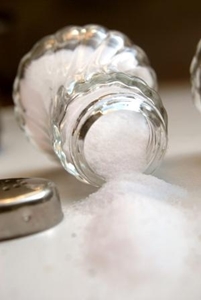Working in the healthcare industry as a travel PT, you are well aware that sodium intake should be limited. A great place to start reducing salt consumption is by cutting out those processed foods and replacing them with healthier alternatives. Plus, some research indicates that too much salt may be the cause of joint pain for some individuals.
The theory
You run into joint pain and other bone issues frequently on travel physical therapy jobs. Specifically, you may treat patients who suffer from rheumatoid arthritis (RA). According to Everyday Health, these individuals may experience additional swelling – and therefore pain – if they are consuming diets that are high in sodium. While there's no proven evidence in this matter, the source explains that a diet high in omega-3 fatty acids and free of processed carbs (which are loaded with sodium) has been found to reduce joint pain in those with RA.
Research
German researchers recently published their findings in the journal Rheumatology International, which explained how they came to the conclusion that clinical signs of inflammation may be reduced for RA patients when a diet low in arachidonic acid is consumed. This was after 68 patients were split into two groups: one given a standard Western diet (WD) and the other consuming the anti-inflammatory diet (AID). Additionally, participants were administed either a placebo or fish oil capsules over a period of three months. Evaluations were taken monthly, and in the end, 60 patients completed the study. Those with the AID diet saw lower levels of tenderness and fewer swollen joints.
Bad to the bone
The Endocrine Society, a research organization that dates back to 1916, released a statement in 2013 explaining how excessive salt consumption may be bad for bones. This is particularly valuable information to share with patients on travel PT jobs who have gone through menopause – as they may begin experiencing changes in bone density due to hormonal fluctuations.
"Excessive sodium intake appears to be a risk factor for bone fragility," Dr. Kiyoko Nawata, a professor of health and nutrition at the University of Shimane in Japan, said in the press release. "It is therefore important to consider excessive sodium intake in dietary therapy for osteoporosis."
These claims were made after Nawata led a study that found aging females who consumed greater amounts of sodium were four times more likely to suffer a nonvertebral fracture. Since most Americans consume more than the recommended daily intake of sodium (2,300 milligrams), it's imperative that the amount of salt used in cooking and the consumption of processed foods is limited.
Talk with those you are helping through rehabilitation on travel therapy jobs, especially if they suffer from some form of arthritis. The Centers for Disease Control and Prevention explain that more than 75 percent of sodium ingested by Americans comes from processed foods and dining out at restaurants. While cooking at home can be time consuming, it may help relieve joint pain and can also decrease food costs.

